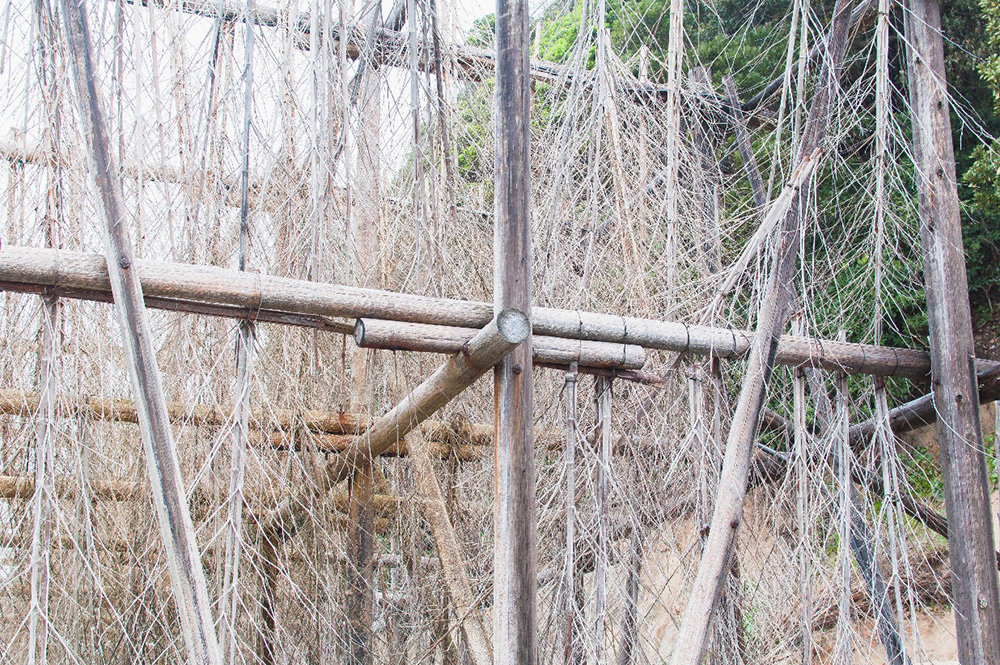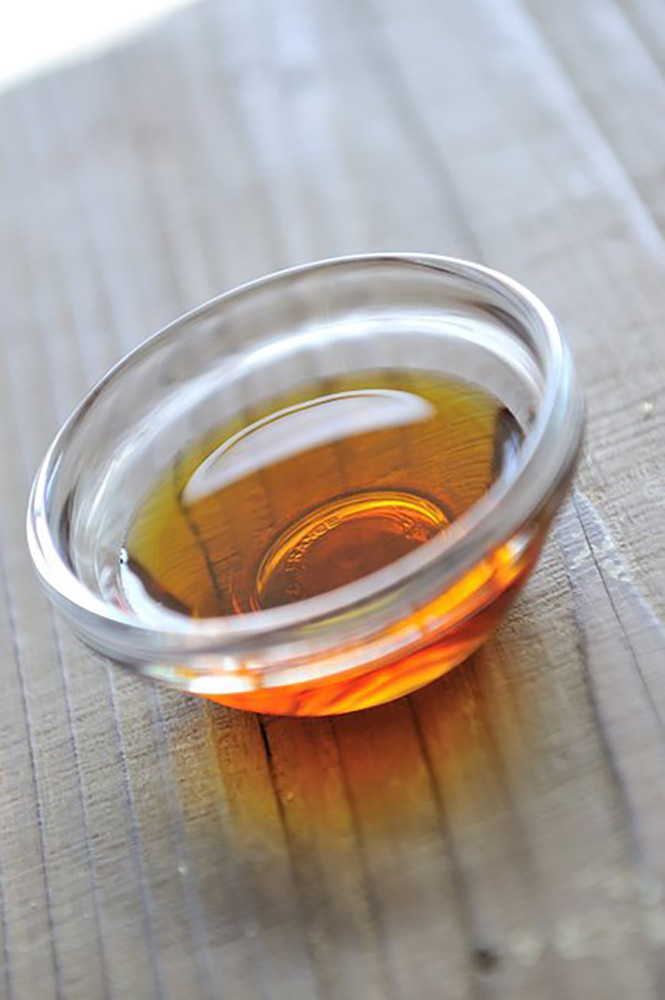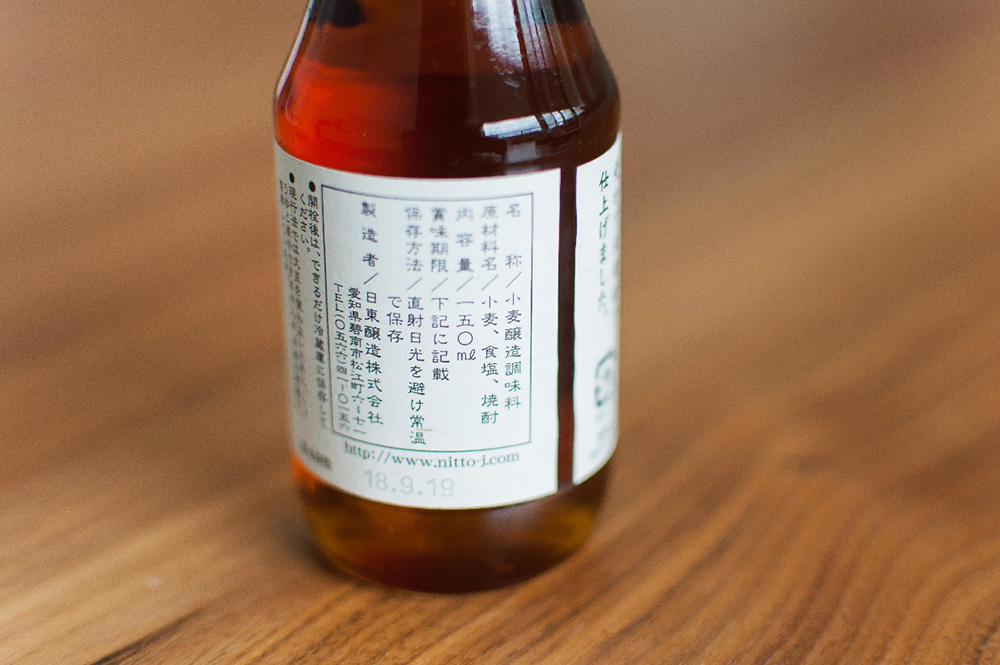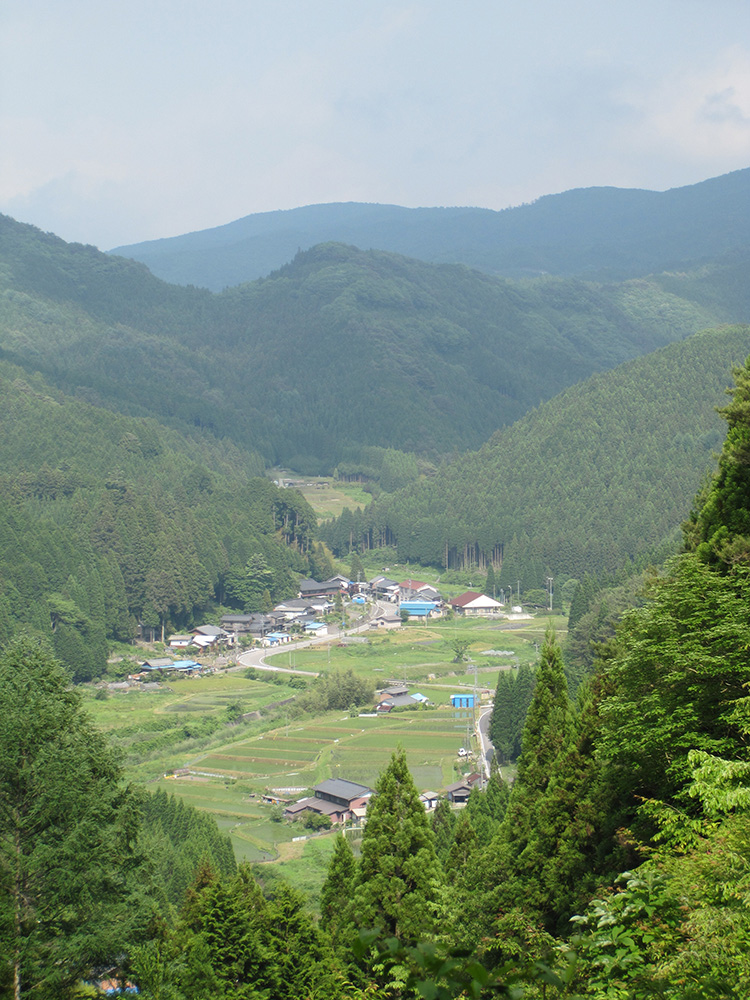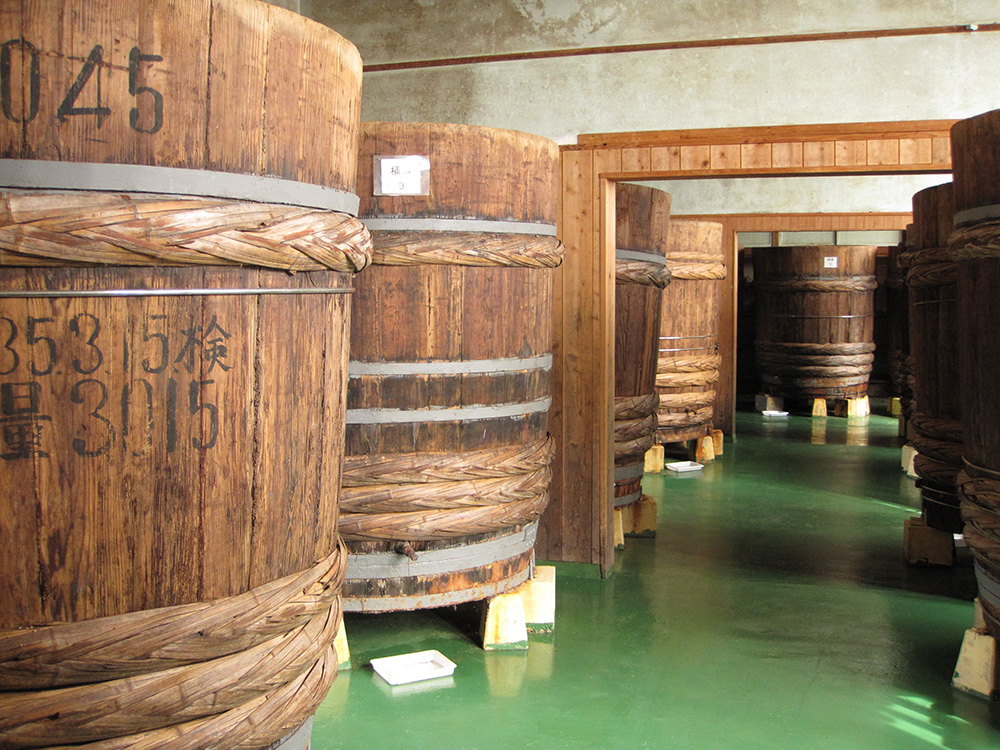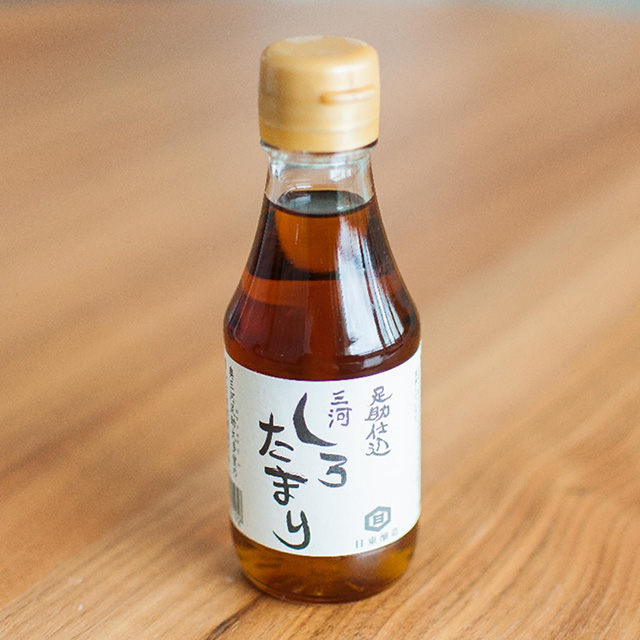
Rejuvenation of time-honoured Shiro Shoyu. Yoichi Ninagawa from Nitto Jozo talks about his Mikawa Shiro Tamari brewed in Asuke.
If you are a Shoyu lover, you must know Mikawa Shiro Tamari. It’s light-amber coloured Shoyu that has an exquisite flavour. I attended a workshop to make this Shiro Tamari at home and interviewed Yoichi Ninagawa, the head of Nitto Jozo that makes this Shoyu. This workshop is by the way held at various locations in Japan and you can see the previous report at here.
The hero in my kitchen. Mikawa Shiro Tamari brewed in Asuke.
In this report, you will learn the local fermentation culture in Aichi, and how this Shiro Tamari is brewed.
✔日本語記事(Japanese article)
昔ながらの白醤油を復活。「日東醸造」蜷川洋一さんに聞く『足助仕込三河しろたまり』の誕生話
So what is Tamari again?
You must have at least heard about its name, Hatcho Miso. Hatcho Miso is one of Mame Miso, which is made in a different way than other standard Miso like rice Miso and barley Miso. They are made from steamed soybeans and rice Koji or Barley Koji, but Mame Miso is made from soybean Koji.
Mame Miso is made from “Tama Koji (Koji balls)”
To make Mame Miso, you first need to steam soybeans. Then mash the beans to form a ball-like shape and inoculate Tane Koji (Koji starter) into them. This is called Tama Koji, which is then mixed with salt and placed tightly in a barrel. The mixture needs to be pressed down by weight until matured.
There are a few differences in making between Hatcho Miso makers (Kakukyu and Maruya Hatcho Miso) and other Mame Miso makers. One of them is the size of this Tama Koji. The former makes it in the size of a child’s fist, and the latter the size of a thumb.
3 tons of river stones on Hatcho Miso.
Tamari was first found on the top of Mame Miso
Originally, Shoyu was only Tamari Shoyu. Tamari refers to the liquid that collects in the barrel of Miso, and that was the original form of Shoyu today. Our grandparents called it Tamari instead of Shoyu.
Tamari that collects on Miso.
Shiro Shoyu was born in Hekinan where Nitto Jozo sits
Tamari looks just like dark colour Shoyu we find in most of the supermarkets now. Shiro Shoyu that was made from the end of the Edo period to the Meiji period, in contrast, has a very light amber colour. It was first made in Hekinan, where Nitto Jozo is.
Shiro Shoyu = Shiro Tamari. How is it made originally?
This Shiro Shoyu has another name; Shiro Tamari. It’s not hard to imagine that Shiro Tamari was also found on Miso. The reason why the colour is lighter is that the Miso was Kinzanji Miso, which is made from wheat.
That was around 200 years ago, and this Shiro Tamari was something that professional chefs would use in their kitchen.
Hidden flavour in your cooking
Yoichi told us that there are two types of soup used in Udon noodle restaurants in Aichi. For a standard Udon you’ll get the one based on Tamari from Mame Miso, and for Udon with Tempura or eggs, you’ll get the one based on Shiro Shoyu that emphasizes the flavour from Dashi broth.
Yoichi says that Shiro Shoyu is something you use in your cooking to stretch the level of final taste. You would be wondering what was added and wouldn’t immediately recognize that it was Shiro Shoyu. It’s a natural balancer in your cooking.
Shiro Shoyu making at Nitto Jozo. Reviewing the ingredients
How did Nitto Jozo come to shift to Shiro Tamari from Shiro Shoyu? It started with what Yoichi’s father said.
“We started making Shiro Tamari 25 years ago. At the end of Showa period, my father said, ‘Shoyu I’m making now isn’t exactly the same as what we had in old days.’ Aichi is, in fact, one of the agricultural districts in Japan. Atsumi peninsula produces a lot of leafy vegetables and melons for instance. It’s one of the reasons why brewing culture developed in this area, but the supply of soybeans and wheat were never enough within the country particularly after the second world war. Our company also depended on the imported beans and wheat, but my father focused on the ingredients first.”
So they start using locally produced soybeans and wheat. The next target was salt. There have been some salt farms along the Mikawa Bay and Hekinan. The biggest one was the farm in Kira. Kira is a domain of Ryonosuke Kira that appears in the story of Chūshingura/Forty-seven rōnin (Akō incident).
“As a matter of fact, a part of this story is true. In our area, it’s believed that the reason why Kira Yoshinaka and Asano Naganori didn’t get along was their conflict over salt making.”, says Yoichi with a grin.
“In those days the salt from Akō was considered to be the best in Japan. Kira was making salt as well but didn’t beat the quality of Akō. So he went to see Asano ask for his recipe but obviously rejected. Kira took it as an insult and did not instruct Asano in the ceremony. As a revenge, Asano drew his short sword and attempted to kill Kira. That’s the local story.”
Disappeared salt farms in Japan
In 1971, the Act on Temporary Measures for the Modernization of the Salt Industry was made. The traditional way of salt making was no longer allowed due to the industrialization, and all salt farms disappeared from the coastal area. This change was made due to the Japanese economic miracle, which demanded a more efficient way of salt making as salt was mainly needed for factory-use. The nation built 6 factories and started making salt by extracting and concentrating sodium ions and chloride ions from seawater. This method was much cheaper than the traditional method, which resulted in the price destruction of salt on the market.
The revival of natural salt in Japan
The factory-made salt has very high purity with more than 99% sodium chloride content. The natural salt, on the other hand, has 85% and the rest is minerals. Those minerals are, in fact, what we feel tasty when we eat it. Fortunately, the government-mandated monopoly on salt was demolished in 1997 and natural farming of salt is revived.
“three-dimensional salt field” hanging bamboo upside down.
Yoichi’s obsession with salt at Nitto Jozo
For Mikawa Shiro Tamari brewed in Asuke, Umi-no-sei is from Izu Ōshima. Yoichi uses this natural salt as the best fitting salt for Shiro Tamari, but there is one more reason.
“The history of Umi-no-sei equals to the history of salt in Japan. Since the natural salt farming was banned in 1971, some researchers actively made a natural salt revival movement. The group of those researchers is, in fact, the original group of Umi-no-sei today. So I consider that it is my task to use their salt and support their idea.”, said Yoichi.
The salt was the second thing they changed at Nitto Jozo after soybeans and wheat. Yoichi’s father believed that this change would bring their old Shiro Tamari back to their production.
In 1993, finally their new product “Mikawa Shiro Tamari” was born.
Making Umami-rich Shiro Shoyu by changing the ratio of Koji and brine
The light-amber coloured Shoyu.(Photo by Nitto Jozo)
Nitto Jozo’s next target was the ratio of Koji and brine.
The classic ratio of Shiro Shoyu is Koji 1: brine 2. That is what Yoichi’s father wanted to change.
“He wanted to change that down to half. I disagreed because we would have less production output, but he did it anyway. He believed that the taste of Shoyu would become deeper and after making a sample version, I found out that he was right.”
They managed to improve the taste of Shoyu, but there was a big problem; the colour.
The debut of Shiro Shoyu made of wheat 100% in 1993
“The important factor of Shiro Shoyu is the colour. If the colour is dark, that’s Usukuchi Shoyu. We needed to keep its light amber colour and only improve the taste.”
After much trial and errors, Yoichi made 100% wheat Shoyu as an experiment. He only reduced 5% of soybeans but the decision was right. The Shoyu came out lighter in colour but richer in taste. In 1993, the new Shiro Shoyu made a debut to the market.
Another obstacle
Finally, Shiro Shoyu was released, but Nitto Jozo encountered another problem in 2001 when they received a letter from MAFF. It said: “Mikawa Shiro Tamari from Nitto Jozo does not apply to Shoyu according to our standard, however, it is shown as Shoyu on your label. This does not comply with JAS law so take necessary measures immediately.”
No soybeans = no Shoyu!?
As a matter of fact, JAS defines that Shoyu must be made from soybeans. Yoichi, of course, knew that, but he misunderstood that a product is not subject to this restriction when it does not have JAS mark.
However, there was another quality labelling system in Japan which defines that Shoyu must be made from soybeans. So now he had to change the label of his Mikawa Shiro Tamari.
He had two choices: keeping the recipe and change the label, or using a small number of soybeans and keep on stating Shoyu on the label. He instantly thought that he would make the latter choice, so his product could still be called Shoyu and the taste and the colour hardly changes. MAFF also confirmed that it was fine that way.
Customers wanted the recipe not to be altered
As there had been some regular customers, Yoichi sent the letter of the announcement.
“I should have written that we would start adding a very little amount of soybeans in our Shoyu, but accidentally I asked whether I should do that or not in the letter. Surprisingly, all customer replied that they did not care about the label and wanted me to keep making wheat 100% Shoyu. According to them, it’s more unnatural to have soybeans in what they had been using. I had a mixed feeling though. I’m a Shoyu maker. If I can’t call my Shoyu “Shoyu”, it feels like my job is not accepted by the public. I thought about it through and through, but in the end, I realized that they were right.”
Since then, Mikawa Shiro Tamari shows as “condiment made of fermented wheat”.
The current label of Mikawa Shiro Tamari. Stated as “condiment made of fermented wheat”.
Searching for the ultimate water
Nitto Jozo obtained the best-selected soybeans, wheat and salt. What’s next? Water!
Their brewery in Hekinan has a water well, but a tap water had been used to make their Shoyu when Yoichi came back to his home brewery 34 years ago. As he tackled the best ingredients, he started wondering why this water well was not used for their Shoyu making.
“I never thought about it, but questions from my customers made me think why not use our own water well.”
The water from the well was inspected by authorities every year and proved to be safe for drinking. Still, the health department told Yoichi that the quality of the well water wouldn’t be stable enough after the heavy rain for instance. On the contrary, the tap water is safer because it is controlled by water supply law according to them.
Meeting the ideal water in Asuke-cho, Toyota city in Aichi
Asuke, deep in the mountains of Toyota city.(Photo by Nitto Jozo)
Yoichi didn’t get convinced by the health department explanation because a Sake brewery in his area was making their Sake from the water from their water well. While struggling to find the answer, he runs into a village called Asuke, deep in the mountains of Toyota city. There he meets the assistant leader of the village.
“Do you happen to have fine water for Shoyu making?” asked Yoichi. The leader kindly introduced several locations, and one of them was a very small village with a population of only 40 men and 20 houses.
In the centre of this village, there is Otaga elementary school that went abolished at the end of Showa period. Yoichi tried water from the well, and indeed, it was soft and perfect.
He immediately went to the local health department and asked for a permission to use the water for Shoyu making. As you can imagine, it didn’t work out so easy but Yoichi never gave up and kept on going to the department several times every month. After half a year, the health department gave in and allowed Yoichi to use the water under two conditions:
– To bring the well water for inspection once in half year.
– In case the unwanted result comes out, stop using the water immediately.
Making Shoyu on the top of the mountain
Driving time from Hekinan to Asuke is around 2 hours. Yoichi initially thought to get water from Asuke by a truck, bring it back to Hekinan to make Shoyu. However, he changed his mind to do that in Asuke while commuting to the health department every month.
Perfect environment to make Shiro Shoyu
The water well sits at 720-meter elevation and the temperature doesn’t reach 30 even in summer. None of the houses has an air conditioner in this village. Coincidently, this Asuke’s climate was best suitable for Shiro Shoyu making because the hot temperature makes the Shoyu’s colour darker.
Turning the abolished school into a Shoyu brewery
Otaga school(Photo by Nitto Jozo)
Yoichi asked the assistant leader whether he could use this Otaga school for Shoyu making. Funny enough, he gave a permission instantly. The truth was that there were 6 abolished schools in Asuke and it was a cause of a headache for the leader to break them down. Naturally, it was a better deal to rent out. It was a win-win situation for both. Although the leader told him that he could decide the yearly rent by himself, Yoichi decided to contribute some of the rent to the local community in order to bring some benefit for them too.
So now finally Shiro Shoyu making of Nitto Jozo settled in Asuke. Shiro Tamari is matured in Asuke for about 4 months, then transported to Hekinan for finishing. For this workshop, Yoichi brought water from the well in Asuke. The Koji spores used at Nitto Jozo has been maintained at Bioc especially for Shiro Shoyu making.
Next goal: creating a fermentation network in the local community
To close the lecture, Yoichi said that he wanted to make the supportive fermentation networks in his area. Instead of introducing own products only, why don’t we talk about neighbour’s fermentation?
“Shoyu breweries can talk about Miso breweries, Sake breweries can talk about vinegar breweries. This will be the best way to support the local fermentation culture.”
I think I already witness this movement in Aichi, as all the breweries I visited were indeed bragging about their fermentation including other local breweries.
✔日本語記事(Japanese article)
昔ながらの白醤油を復活。「日東醸造」蜷川洋一さんに聞く『足助仕込三河しろたまり』の誕生話
Related links
Nitto Jozo
Nitto Jozo Online shop
Nitto Jozo Facebook page
Shiro tamari club Facebook page
✔Related articles
White soy sauce using wheat “Mikawa Shimoritari” handmade workshop report
Three dish recipes you want to eat many times in New Year │ The ultimate white soy sauce “Mikawa Shimoritari”





